
Rights Reserved - Free Access.
This digital object is protected by copyright and/or related rights. This digital object is accessible without charge, but its use is subject to written permission.
Unless expressly stated otherwise in the licensing conditions, you are free to make any of the acts permitted by your national copyright and related rights act, including browsing, printing and making a copy for your own personal purposes.
All other acts of reproduction and communication to the public are subject to the licensing conditions attached to the digital object.
ARMY BOOTS OF THE WORLD. REVIEWS
Important notice: we do not sell any boots! The prices are given for information purposes only!
Czech Republic ![]()
Military Boots of Czechoslovakia
Czech-made footwear is traditionally comfortable to wear and high in quality. During the times of the Soviet Union, the shoes and boots "Made in Czechoslovakia" were very popular, almost on the level of the "Austrian" and "Finnish" footwear," and this opinion was based on the strong facts.

In the Eastern Europe before World War 2, Czechoslovakia was in fact the only one democratic republic, surrounded by more or less strict dictatorial states. Czechoslovakia was also the most industrially developed country of the Eastern Europe, so it was a good reason for Hitler to choose this country as his first victim in 1938. The seized industrial enterprises of the "Protectorate of Bohemia and Moravia", which was established on the former Czech territory after the separation of the "puppet" Slovak Republic, had reinforced considerably the military and industrial potential of the Third Reich. And even much later, Czechoslovakia was one of the most advanced and industrialized countries of the USSR-led Council for Mutual Economic Assistance and the "Warsaw Pact".
There is still settled opinion in the West, that the USSR used to control its "Warsaw Pact" allies very tightly, up to the smallest details. However, apart from political and economic issues, the satellites of the Soviet Union were free in their own development of such "little things" as uniforms, footwear and other equipment.
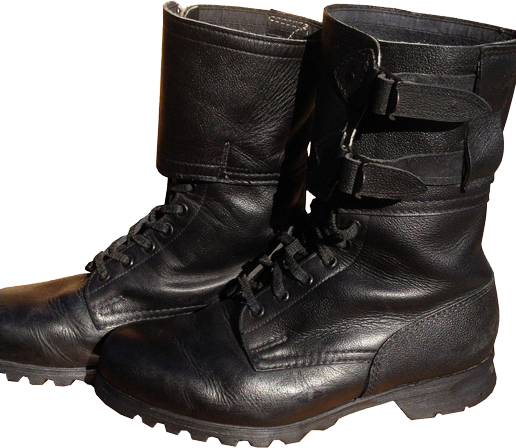
Czechoslovakia was probably one of the most developed countries of the Eastern Bloc. In particular, in terms of quality, design and comfort of wear, Czechoslovakian combat boots type M60 (adopted in 1960) were actually not worse than, for example, French military boots BMJA Mle. 52 or BM65 ("Rangers"). The trend of transferring from high boots to the high-laced boots was very noticeable at that time, and the Czechoslovak developers showed very quick reaction on this idea. The Armed Forces of Czechoslovakia had been using both high boots and high-laced boots with the same tread pattern of the out-soles, but since the year 1960 they switched to high-laced boots almost completely.
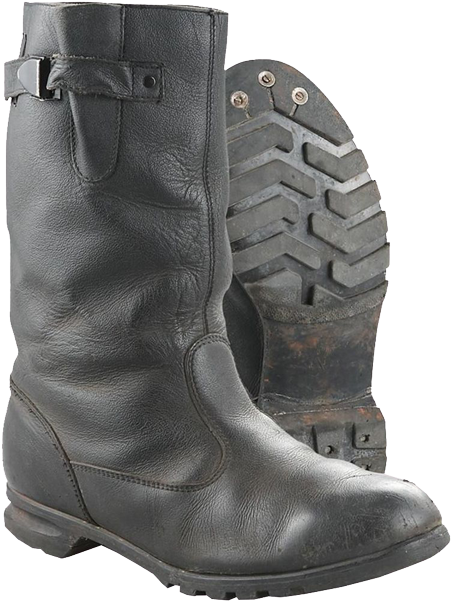
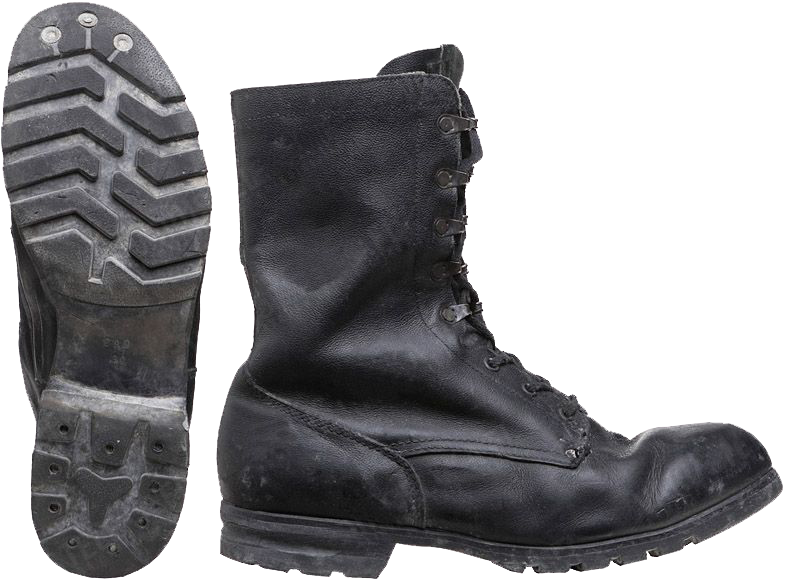
Besides M60 model army boots, Czechoslovakian military introduced the "stroke"-type camouflage pattern (called sometimes "rain"-pattern), similar to the well-known type of camouflage used in the National People's Army of the GDR, but with slightly different pattern and colour.
Just like the French "Rangers"-type military boots, the Czechoslovakian boots featured laces and belts with buckles. The lacing system consisted of six pairs of round eyelets, above which there were leather cuffs with double buckles.
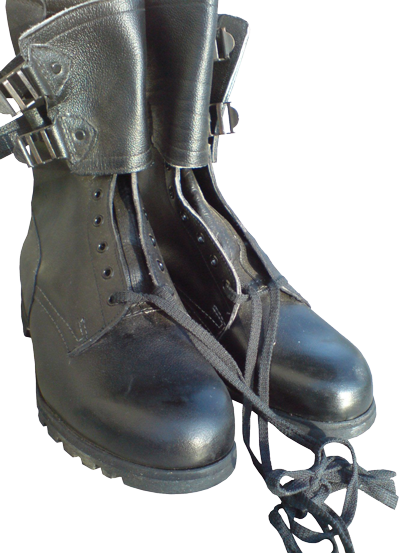
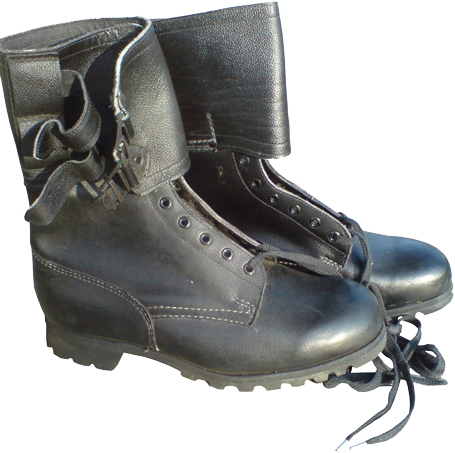
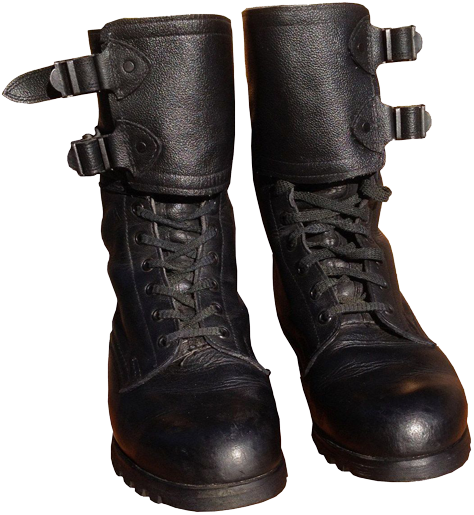
The leather of the boots was very durable, but not stiff, and after "breaking-in" it was surprisingly soft and comfortable. The boot's counter was reinforced with extra leather layer.
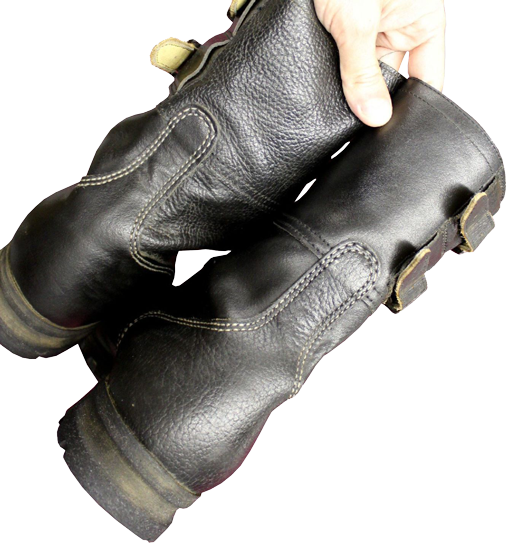
The shape of these boots is anatomically correct, repeating all the natural curves of the ankle and foot, thus providing comfort of wear.
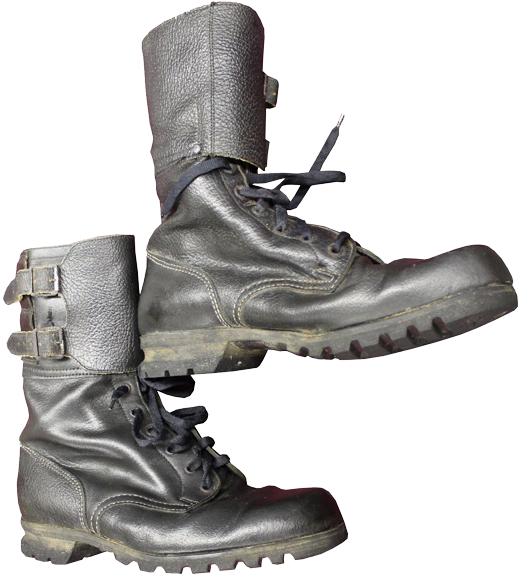
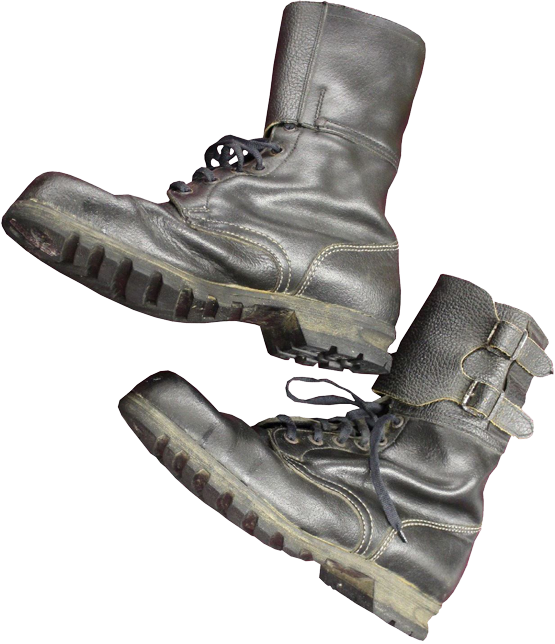
For some mysterious reason, this simple rule was almost always ignored for the Soviet Army soldier's high-boots. In my opinion, an absurd exultation that too massive production of soldiers' high-boots did not allow to provide high quality of them is absolutely groundless, and the only one reason was deep disrespect of the USSR leaders to their army and its soldiers.
The buckles system was more complex than, for example, in the French boots, and in the Czechoslovakian boots there were provided special leather "pockets" to secure the ends of the straps.
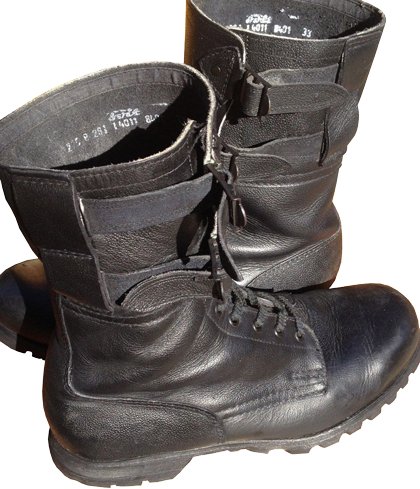

The buckles system was not standardized, and there were different variants of them. Unlike the contemporary French boots, the belts of the leather cuffs were not cut from a single piece of leather, but were riveted individually.

The out-soles of the Czechoslovak army boots model M60 were made of solid and durable vulcanized rubber, glued and stitched to the leather mid-soles by "Goodyear welt construction" method. The heels and toe of the out-soles were additionally reinforced with boot's mount screws. The outer sides of the heels feature longitudinal groove that served to reduce the weight of the heel and, at the same time, to fix the skis mounting accessories. 17 years later this feature was used in the Norwegian M/77 military boots, which are still widely used today.
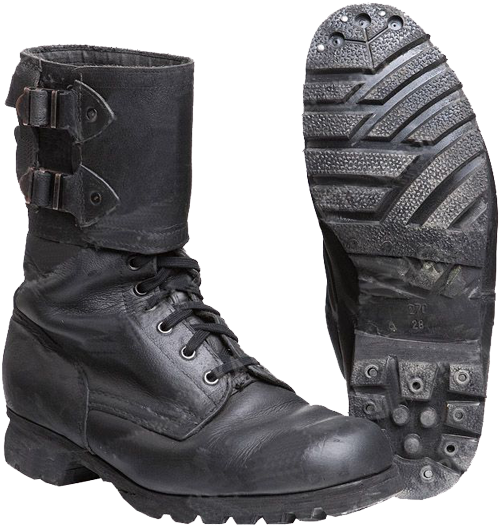
The tread pattern of Czechoslovakian army boot differs from the "patterns" of other countries and is very easily recognizable.

One can assume that during the development of this tread pattern the Czechoslovak footwear designers were certainly influenced by:
- "Tractor"-type tread patterns of tires of the American "Firestone" jeeps,
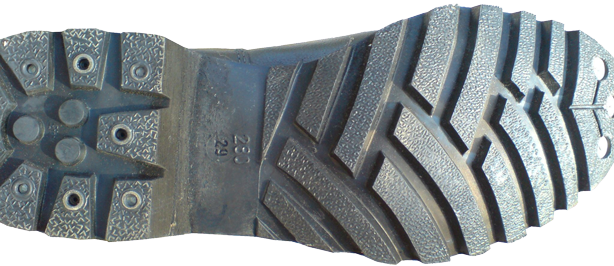
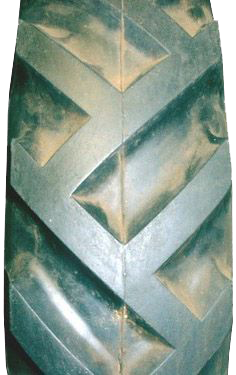
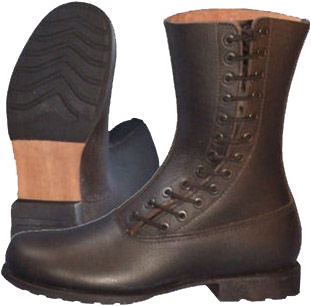
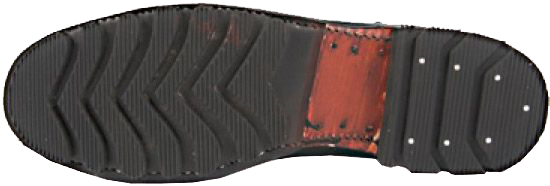
- Tread patterns of the German paratroopers' boots of the 1930s.
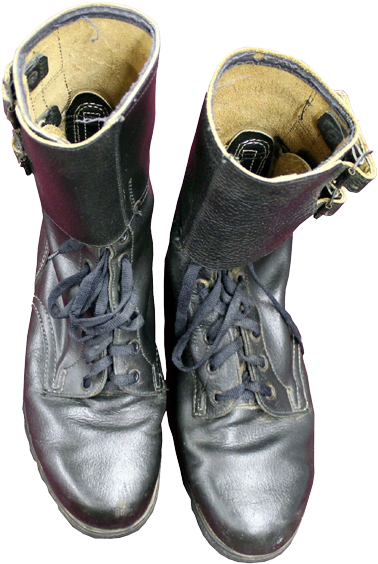
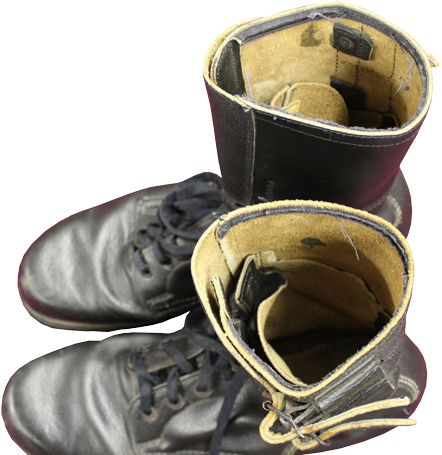
In those years the German Third Reich was a pioneer in the creation of high-laced boots for paratroopers, and the first experimental model of such boots featured the tilted side-lacing located on the outer sides of the boots, and the out-soles were made of natural caoutchouc (rubber resin). Further on, the tilted side-lacing system proved to be impractical, and the second model of the Luftwaffe paratrooper's boots featured usual straight lacing.
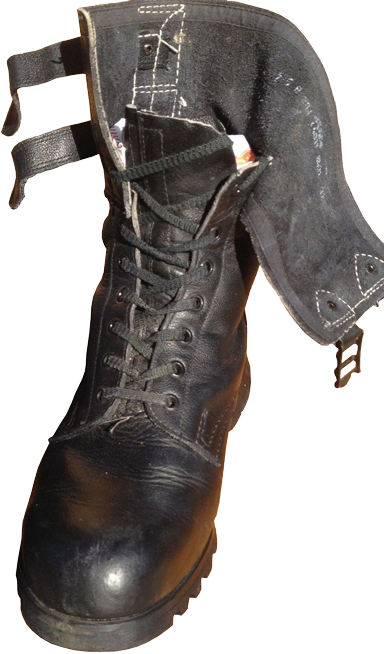
In the early years the Czechoslovakian M60 boots had light red lining inside (as the early French black boots BMJA 65 "Rangers"), later they were black inside.
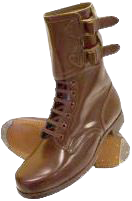
Very often inside the leather cuff there was marking with the size, manufacturer's info, serial number and other data. The most famous manufacturer of Czechoslovak army boots, of course, is "Prabos" company, which is active even nowadays.
The main colour of the Czechoslovak army boots was black, but brown boots were produced as well, though in much smaller batches.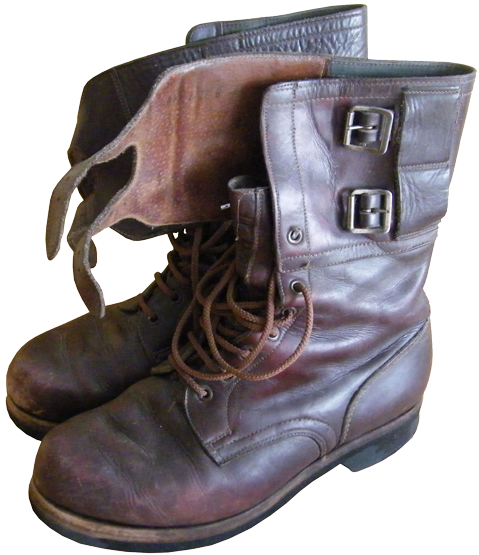

To preserve and protect the waterproof features of the Czechoslovakian leather boot it was recommended to apply special boot polish, based on the composition of natural and synthetic waxes, and this Czech-developed product was not worse than any Western one.

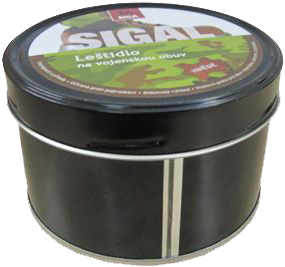
Military Boots of the Czech Republic (since January 1, 1993)
In 1990, the Czechoslovakian Armed Forces introduced a new model of boots, M90. These boots featured no buckles, the tread pattern of the out-soles was also modified, and their appearance become more similar to the Bundeswehr boots.

Five pairs of speed-lacing eyelets were added to the lacing system, while the lower three pairs of simple round eyelets remained unchangeable. Perhaps, from an aesthetic point of view the boots became less attractive, but the simplicity of speed lacing and ease of use are more important for the military footwear.
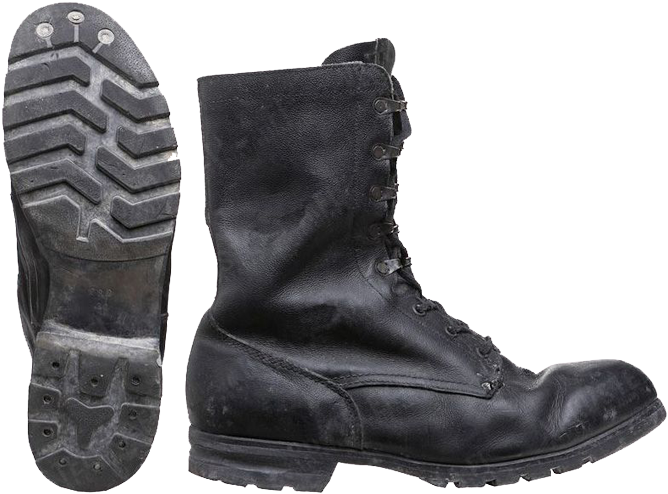
Also the Czech footwear manufacturers offered almost complete copy of Bundeswehr boots for paratroopers (the so-called "Die Fallschirmspringer-Schnurstiefel"),
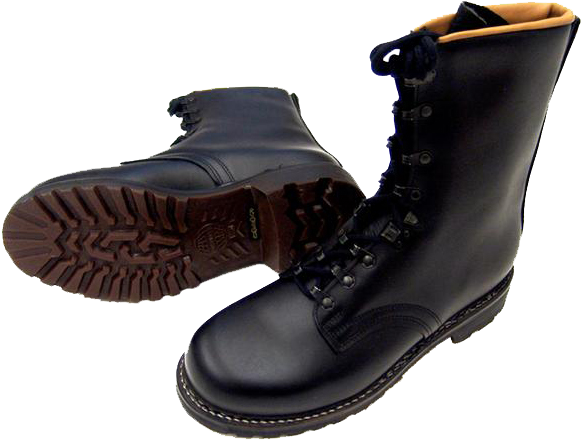
but with the standard "Vibram" out-soles, not the traditional "Berghaken Profilsohlen" out-sole.
In contrast to the well-known manufacturers of copies and fakes, which just look similar to the original boots, the Czechs did not use in their boots the absolutely unnecessary "steel toe" caps, which are capable rather to injure the feet with their edges, but not to protect them, and are discomfortable in use. The most characteristic difference between the Czech version of jump boots and both the original German and the "MilTEC-like" fakes is the lining: the Czechs use gray fabric instead of "glove"-type leather of color shades from light yellow to bright orange.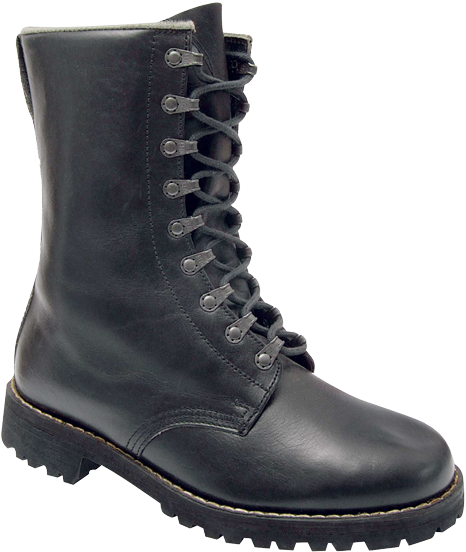

The eyelets of speed lacing system are manufactured not by "STOCKO", as it used to be in the old-style "Alte Art" Bundeswehr boots, but by "MARK", just the same as in German Modell 2000 boots, and in British, Dutch and Danish army boots.
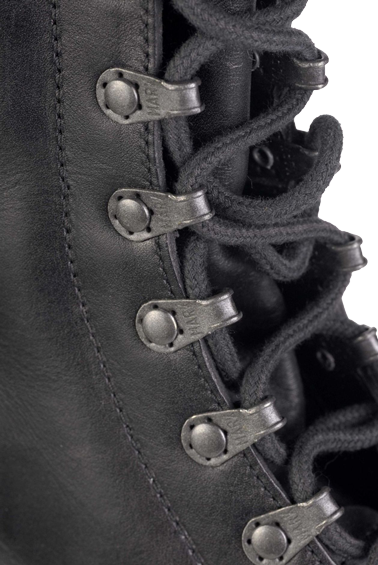
Since the introduction of new models of clothing and footwear not so often leads to complete and rapid replacement of an old stuff, which uses to be supplied from the warehouses for years. In Czechoslovakia they continued to use M60 model boots, but with the out-soles of a new tread pattern.
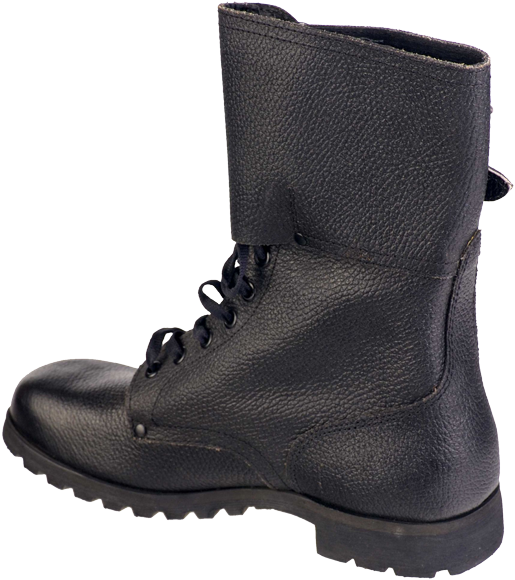
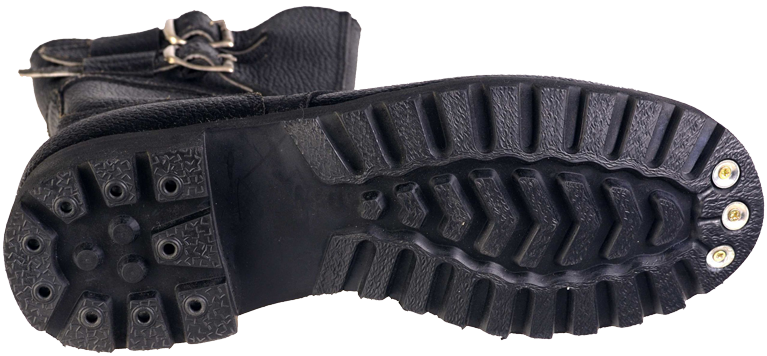
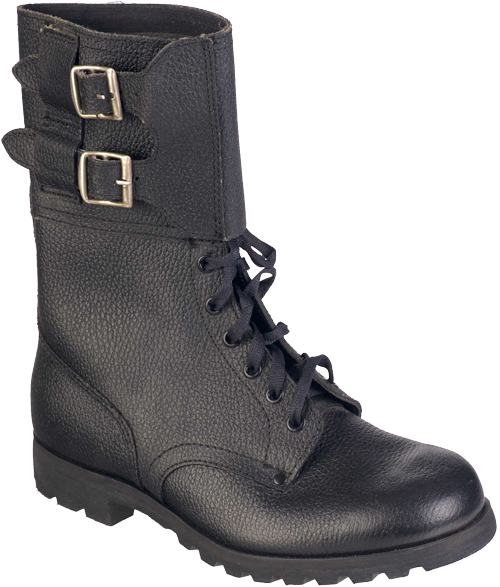
In the early 21st century, both summer and winter boots of Model 2000, manufactured by "Prabos" company, began to be supplied to the Armed forces of the Czech Republic.
The "summer" boots look like many European boots at the same time: the leather upper and soft leather "padding" on the top are the same as in the Dutch M90 boots; the speed lacing system eyelets of white stainless steel are similar to the lacing system of the Swiss M91 boots, for the except that the lower three pairs of eyelets are not D-rings, but usual speed-lacing ones: he outlook appearance of these boots resembles both the new M90 Dutch boots and Bundeswehr "Alte Art Kampfstiefel" of 1970s-1990s; the shape of the heels are of traditional Czech design, with the groove along the heels. The lining of these boots is "glove"-type leather, providing comfort of wear and protection of the feet from injuries.
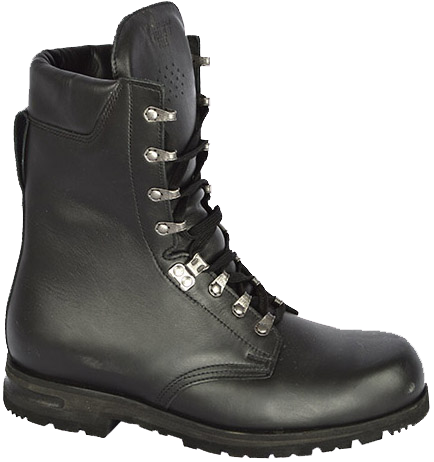
Model S2000 summer boots have anatomically correct design, the top of these boots is made of soft cowhide with a hydrophobic impregnation and reinforced counters. The boots feature soft padding "collar" on the upper part of the boot's top. The lacing system consists of three pairs of simple round eyelets in the lower part of the lacing, a pair of hook clamps in the middle, and four pairs of speed-lacing system eyelets made by "MARK" in the upper part of lacing. The boot's tongue is made of 2 vertical parts, and lined with a thin leather, similarly to the Swiss M91 boots.
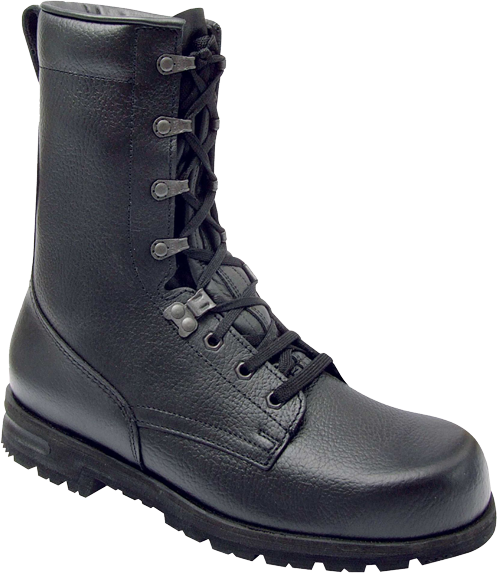
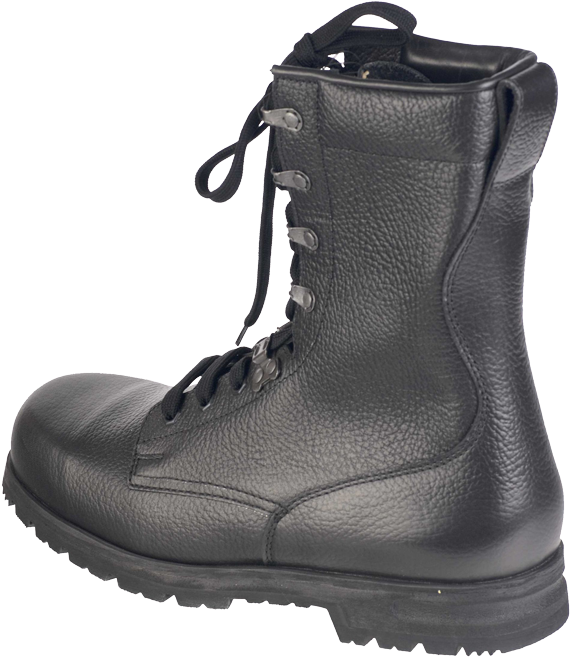
The out-sole made of stiff vulcanized rubber is glued and stitched to the boot's top. The tread pattern is of the new Czech design, and the size and the manufacturer ("Prabos") are indicated there as well.
Winter boots and heavy insulated boots in Czech language are colloquially referred to as "Canada" ("Kanady"). Since the Czech footwear manufacturing traditions are very different from the Canadian ones (which, in general, follow the British and American trends of shoemaking), most likely, the name "Kanady" is intended to emphasize the suitability of these boots to harsh Arctic climate conditions.
Czech winter boots come in several versions. All of them are distinguished by wide "collar" padding to keep warm. Artificial fur or multi-layer textiles are used as the thermal insulation material.
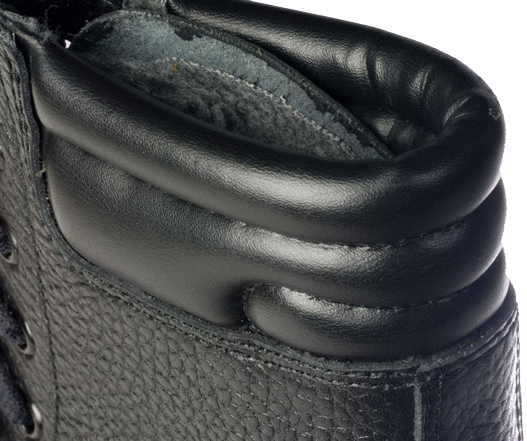
The toe can be reinforced with an additional layer of the leather. Except for the leather "collar" padding, this model is similar to the last modification of the Danish M/58 model boots, where the lacing hooks at the top of the boot are replaced with round eyelets. These Czech boots feature the lacing system, consisting of nine pairs of simple round eyelets.
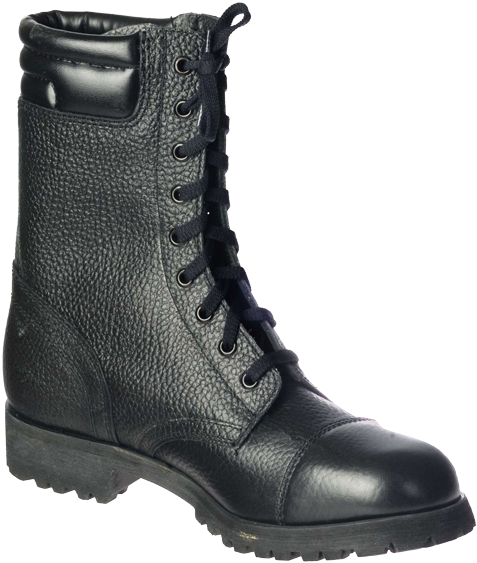
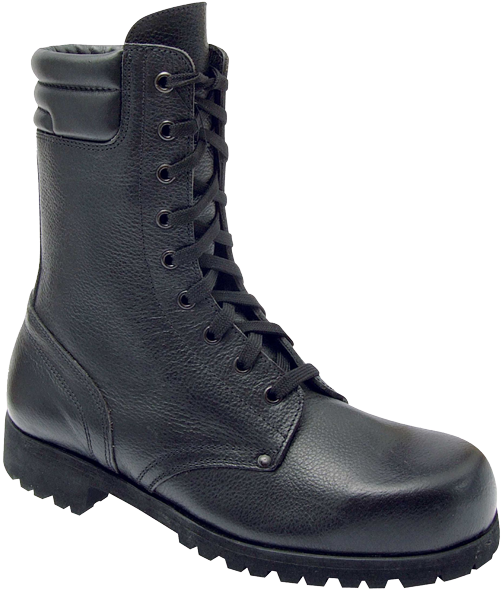
The heels of these boots feature no longitudinal grooves, the leather of the top is grainy, with hydrophobic impregnation. All the above models are of black colour.


The tread patterns of the out-soles are the classic "Vibram".
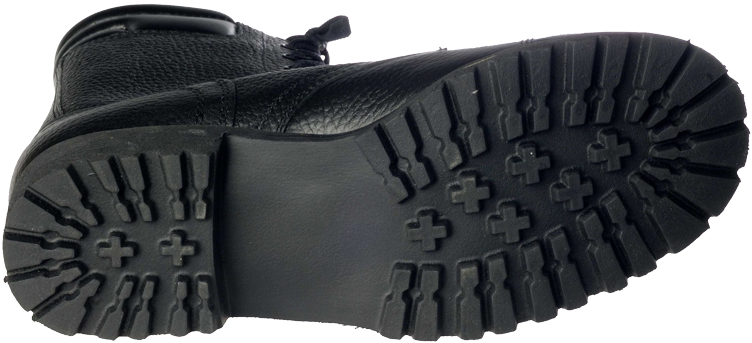
One can assume that during development of "Slavex"-type winter boots by "Prabos" company, it were the Dutch army M90 boots ("NL Legerkisten"), which were taken as an example to follow. The differences consist in the tread pattern and out-sole material (vulcanized rubber in the Czech boots and nitrile rubber in the Dutch ones), the presence of a leather loop for lacing in the rear upper part of the boots (the Dutch boots lack this detail), and the material of the lining inside the boots (the Czechs use insulation fabric, and the Dutch prefer "glove"-type leather).

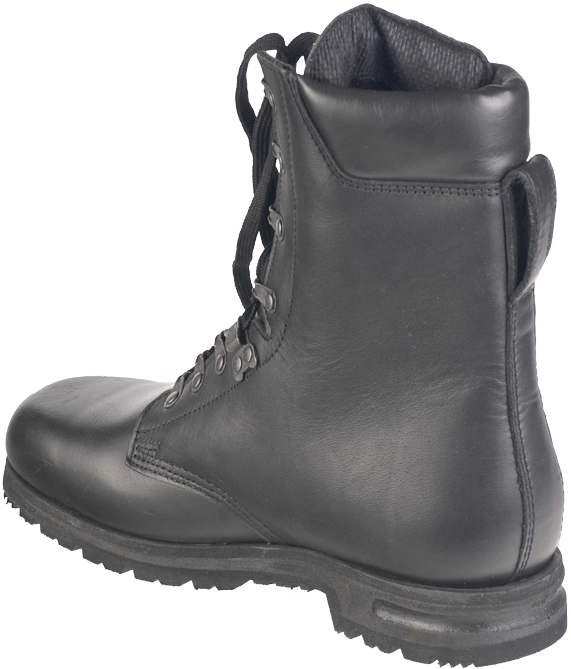
On the outer sides of the heels there are longitudinal grooves, just like on the Norwegian M-77 boots. The out-soles feature new type tread pattern, similar to the most contemporary boots.
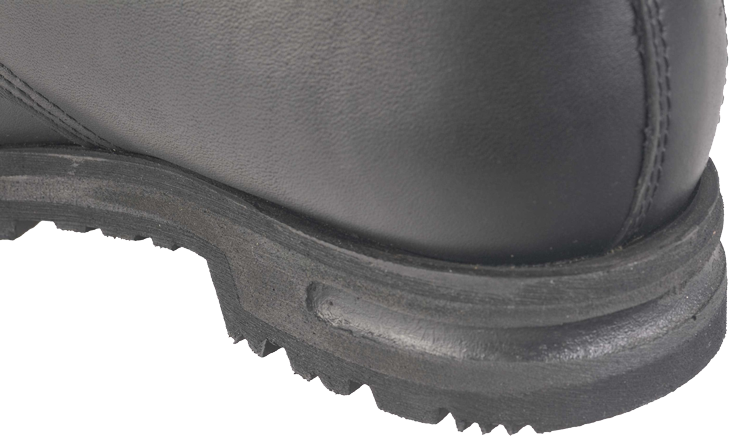
The tongues of the Czech army boots feature ventilation holes and marking. Traditionally, all the military stuff of Czechoslovakia, and then the Czech Republic, is marked by "Crossed swords", the sign of the Armed Forces, as well as with the manufacturer's data, serial number, year of manufacture etc...
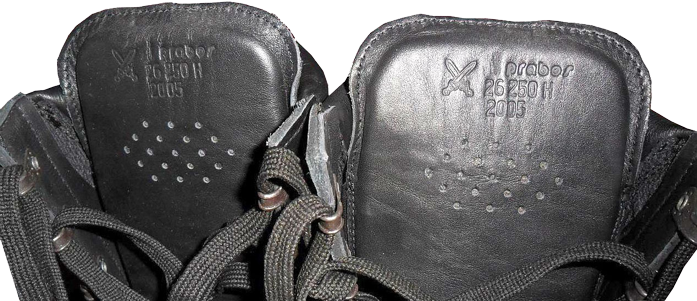
Prabos vz2000 ECWCS are the Model 2000 Winter Boots, which, according to the manufacturer's description, are intended for "use in extreme conditions" and popularly called the "Canada" ("Kanady"). Judging from the user's feedbacks, this is "the best in quality and comfort boots that have ever been supplied to the Czech army".
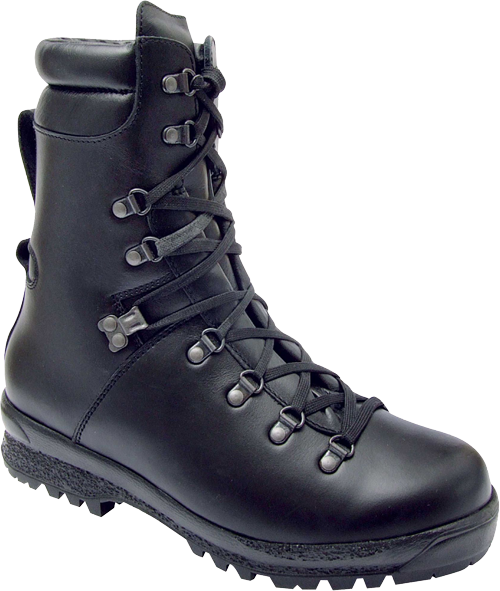

The top of "Prabos" vz. 2000 is made of hydrophobically impregnated cowhide, combining softness and strength. The removable inner lining is made of new materials ("Cambrelle" fabric + "Gore-Tex" membrane fabric). This lining dries very quickly and provides more favorable microclimate and additional comfort compared to the previous models. The distinguishing feature of this type of Czech design boots is the rear side, featuring the loop for laces and the damping tab, intended to provide the flexibility of movement while walking. This damping insert is covered with protruding unstitched "loop" of leather, serving as a mechanical protection for the damping tab.
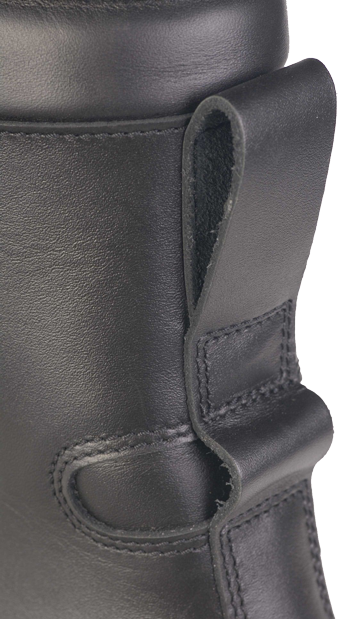
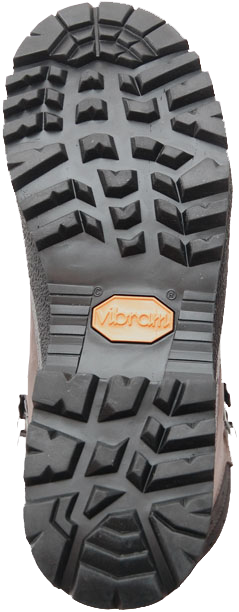
The boot design is characterized with a minimum of seams, as well as many new boots models of other armies of the world, and especially of the German Bundeswehr. On the upper part of the boots top there is a double damping "cuff" for soft grip and protection of the top from dust, small pebbles and moisture. A fairly large leather loop is provided on the rear side of the boots for holding the excessive length of laces, wrapped around the boot's top. The highly stitched boot's tongue is dense and feature the damping tab. The lacing system consists of four pairs of D-rings in the lower part, a pair of hook-clamps for fixing the laces in the middle, and four pairs of D-rings in the upper part of lacing. The upper D-rings are located closer to each other than the lower D-rings.
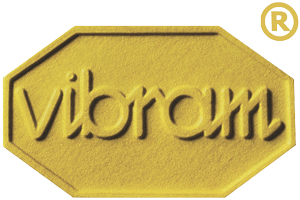
The out-sole tread pattern is "Vibram® Fuora", just the same as on the best trekking boots, such as, for example, "HANWAG", or on the US Army contract boots by "Belleville" or "Matterhorn".
Exclusively for cartalana.com
We have much more interesting information on this site.
Click MENU to check it out!
∎ cartalana.com© 2009-2025 ∎ mailto: cartalana@cartalana.com